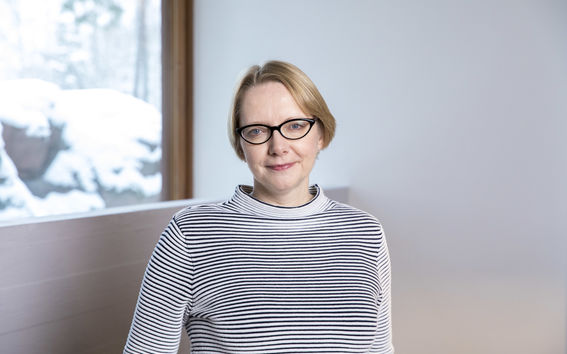For Karin Krokfors, sustainability is much more than just energy efficiency

Professor Karin Krokfors, what do you research and why?
I have been researching how spatial solutions affect the long-term sustainability of buildings and urban environments.
The Earth's resources are not endless, and construction always has a major impact on the environment and energy consumption, with a long payback period. We should therefore be building in a long-lasting and sustainable way; however, we dismantle houses that were built only twenty years ago.
This isn’t always because of technical problems, but the fact that buildings cannot be adapted to the changing needs of people and society. We are accustomed to thinking and building homes as studios, one beds, two beds and so on. Modifying such space solutions is often difficult, for example, because of load-bearing walls and the location of technical installations.
I think we should move towards space unit thinking to promote the adaptability of buildings. Units can always be combined and separated into different size apartments according to needs. The functions of these spaces are also not precisely defined so residents can use the spaces in their own way. These kind of buildings and spaces adapt to changes for example in working life and family structures, or to the challenges of ageing, and can also be useful for future generations in situations we cannot foresee. The idea is not to make individual apartments more efficient, which makes them even more inflexible, but rather make the use of the building stock in general more efficient.
How did you become a researcher?
I have always been curious to understand what lies behind phenomena. At the same time, I have been fascinated by what could exist, which is at the core of the architect's profession. I have studied abroad in several stages during my studies and it was fascinating to see how different cultures approach things in different ways. It has also been helpful for me to grasp the problems and challenges of our own building culture.
From an early age, many people assumed that I would become an architect. It took me a while to decide on my career choices, although I knew I wanted to do something creative. Then I realised that architecture is a much broader and more interesting entity than I imagined, and I've been happy with my choice.
What have been the highlights of your career?
One of the highlights was winning the international Europan competition for young architects in France. That was kind of a starting point for my current path and also created in me a new kind of understanding in building and urban design and their relationship.
Another highlight was the completion of my thesis, because it crystallises so much theory, thinking and understanding, which I have amassed over the years.
What is required from a researcher?
Most importantly a researcher must be curious and enthusiastic about the subject. They also need perseverance and tenacity to overcome the inevitable ‘valleys of death’ during the process. They must believe in themselves and have faith in their own abilities but also be prepared to be critical about their own work.
What do you expect from the future?
I would like to apply the ideas from my rather recent doctoral thesis into practice and give students something that will help them develop as people and professionals in the best possible way for them.
Buildings and built environments will be preserved if they are perceived as meaningful and if they inspire also future generations whose aspirations and needs we do not yet know. The challenge is enormous - how can we simultaneously achieve flexibility and an environment that is perceived as meaningful? We need to think about how we can create built environments of such a high quality that people can and want to preserve them even for hundreds of years.
I have often used Amsterdam and its merchants houses, some of which date from the 17th century, as examples of the resilient built environment. These houses are very adaptive and flexible. One stairway can function either as an indoor staircase or as a staircase that leads to spaces that can be divided according to needs. The spaces are at the same time either small enough or large enough for the staircase so that they can be used for many purposes. Over the centuries, the houses have been one family houses, converted into hotels, small apartments, and back to large family apartments, as well as into businesses or work spaces. The interface between the street and the building is open and alive. The environment is also beautiful and has meaning to its residents. When in the 1970s the city proposed demolition of these houses, it was met with fierce resistance.
Karin Krokfors and other recently tenured professors at Aalto University will talk about their research at the Installation Talks event on 30th January. We hope to see you there! For more details see here.
- Published:
- Updated:
Read more news

Broadband miniaturized spectrometer research receives QTF annual discovery award 2024
The clarity and compelling presentation of the research were one of the reasons why Doctoral Researcher Md Uddin earned the prize for the research paper, which was published in Nature Communications.
Robotics needs safe behavior patterns
Robotics and autonomous systems are developing rapidly. Algorithms that withstand disturbances and uncertainties in the system model and environment are critical for development.